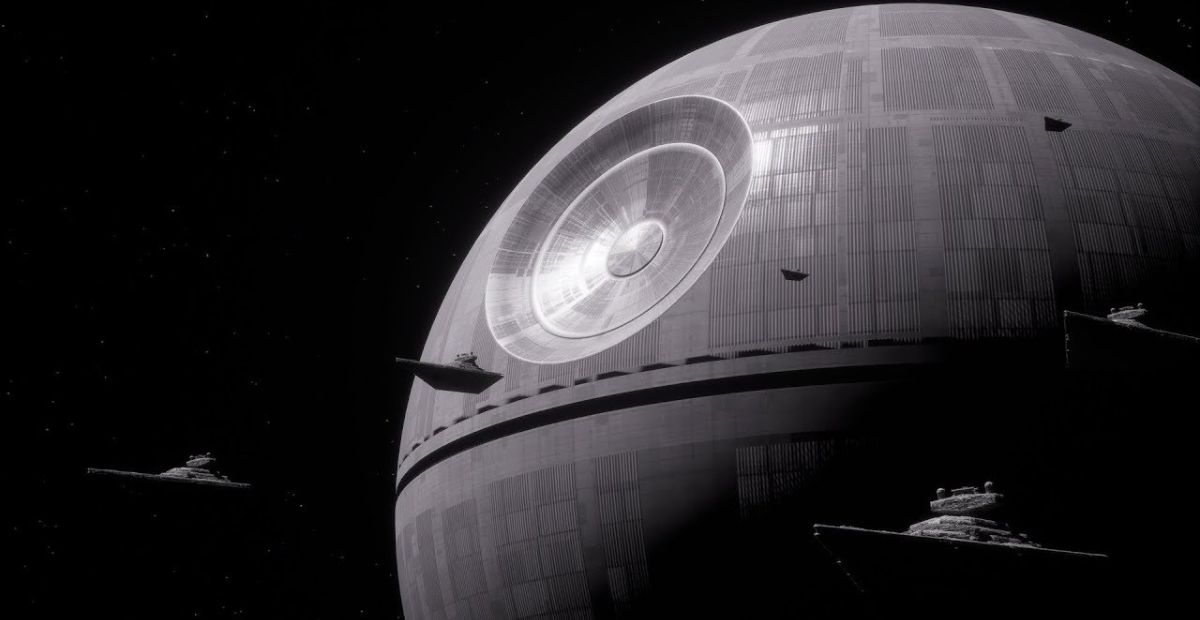The Empire must have been devastated by the loss of its cherished first Death Star. Not only did the Rebels take away their superweapon, but they also left the Imperials with a major financial loss. Given this context, how did the Empire manage to build the second Death Star so quickly? The answer lies in how the times had changed and the economy was geared toward war.
Completion of the Death Stars
This Reddit forum lays out the question and framework well. If we remember that the first Death Star took about twenty years to build and was “a massive resource drain”, then building the second one should have taken as long and cost even more.
Much of the context was provided in Rogue One, which revealed “a decades-long project plagued with design flaws, resource shortages, and moral dilemmas.” So, it is a pertinent question just how the Empire pulled off the second Death Star in about two to four years, at least making it operational.
One of the responses above is on the right track by suggesting that the first Death Star was largely complete in about seven years, with the rest of the time spent working on the superlaser. As this video relays, the two-decades-long construction “should not have taken that long.” The mechanics of the laser held up the project, and hence, the second one would not be plagued by this delay.
Once the Empire had this technological issue resolved and enhanced, they could build Death Star II more quickly. As we know, Galen Erso purposely stalled on completing the superlaser. The first Death Star took longer than it needed to because of his efforts, and so we could see how the second one could move more quickly.
Kyber crystals were another issue that plagued the first Death Star, but were not as much of an issue for the second. With the first one, the Empire had to search and battle off rogue Rebel groups before developing a reliable source on Jedha. With Death Star II, the Rebels were in retreat and mainly hiding on Hoth.
We can also add how the Senate and secrecy were a major hurdle for Palpatine with the first Death Star. Yet, with the second one, the Senate and political opponents were no longer a problem. The Imperial military had also progressed and spread across the galaxy by the time of the second one.
As our recent MayBe4WithYou article partially explained, when addressing the timeline of the Death Star II’s construction, the Empire was overall in control. They didn’t face the same level of delays, material shortages, and problems with the superlaser. We could say the process of building the second Death Star was “streamlined.” Yet, the cost issue still stood in their way.
The Cost Issue Was Significant
Explaining the time issue still leaves us with the cost component. This article conveys that behind the science and Erso issues, “there were also financial barriers” that made the completion of Death Star I difficult. Credit and raw materials were a problem, and we could assume that was the case for the second construction project.
Beyond the cost of mining Kyber crystals, the Empire still needed other building materials and labor, which had been previously partially solved by Narkina 5 prison arrangements. We saw what happened at this prison, so even this part of the cost calculation was an ongoing issue.
A previous study of the Death Stars calculated that the cost of the second one would have amounted to a staggering $419 quintillion of real-world money. Coupled with the financial loss of the first Death Star, these expenses could have destabilized the entire galactic economy.
Even if we take an adjusted estimate of $161 quintillion, the Death Star II was significantly expensive. The Empire would presumably struggle with paying for it, given the loss of the first one and the costs of fighting the Rebels.
However, the Empire benefited from a wartime economy that could rebound and overcome the loss of Death Star I and fund the second Death Star. We can make a comparison to the real world, where “converting to a wartime economy is about redirecting all the inputs…to the creation of war-enabling outputs.” That is, the Empire would direct much of its available resources toward completing the Second Death Star.
Historically, we encountered a similar situation with the US and Soviet wartime economies in World War II, with factories being converted to produce tanks and planes. The governments directed the economies, as did the Empire in Star Wars, borrowing or coining currencies, drawing on labor, and forcibly taking resources.
The difference with the Galactic Empire was that they didn’t have to worry so much about producing more Star Destroyers, but more so about how to get this next superweapon of fear and destruction completed quickly.
As this video indicates, the Empire could build the second one more closely to its raw materials and manufacturers, which reduced costs. Moreover, Palpatine purposely sped up construction because the Rebels had already discovered “an Imperial man-made hyperspace route to Endor.” Wartime urgencies and Imperial control pressed the project forward to lure the Rebels into a trap.
The Empire Could Build the Second Death Star Quickly
The Empire overcame the challenges of time and money to build the second Death Star. The circumstances had changed considerably from when the first model was built. And, the Empire had a vast wartime economy to press ahead with completing the second. Palpatine also expected it to be done quickly, and we know that would have been a major motivator.

